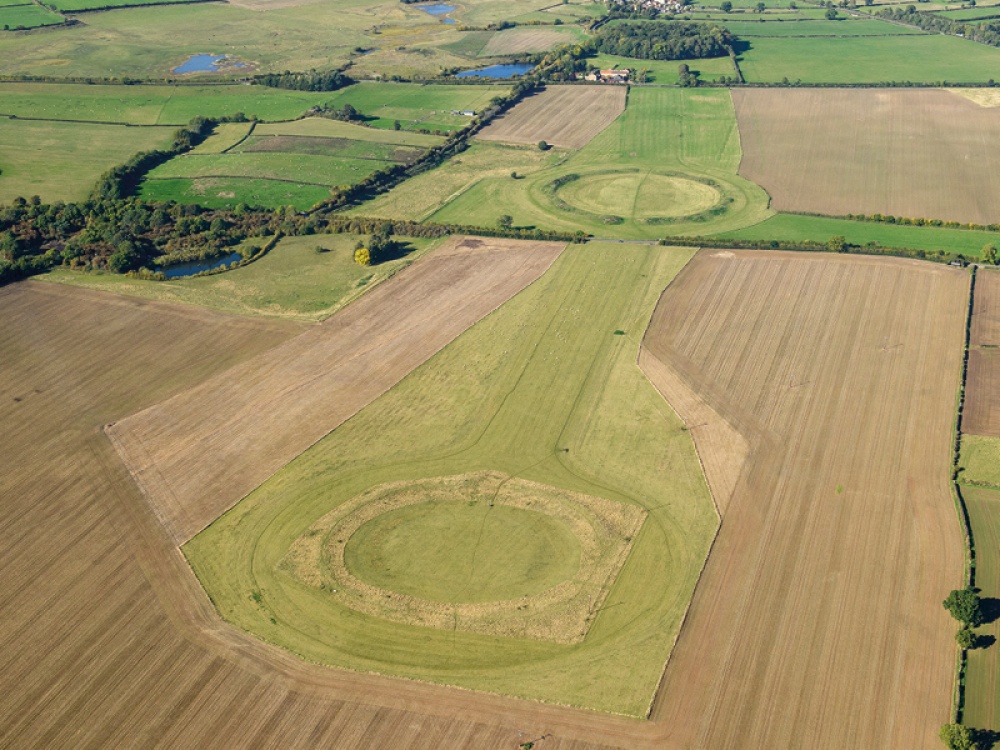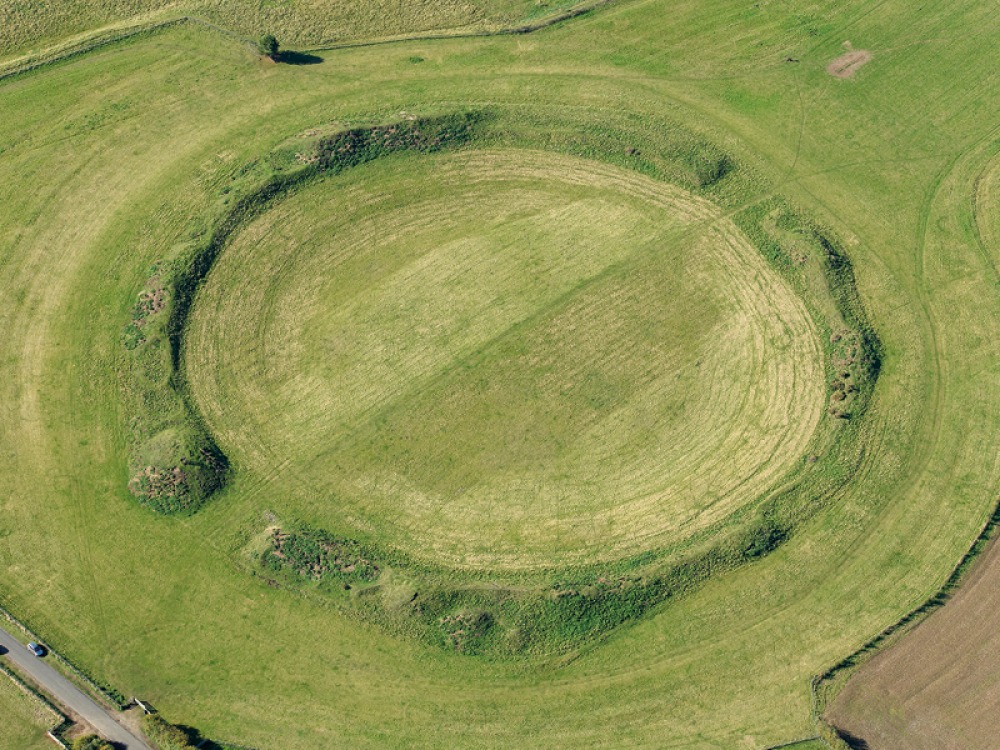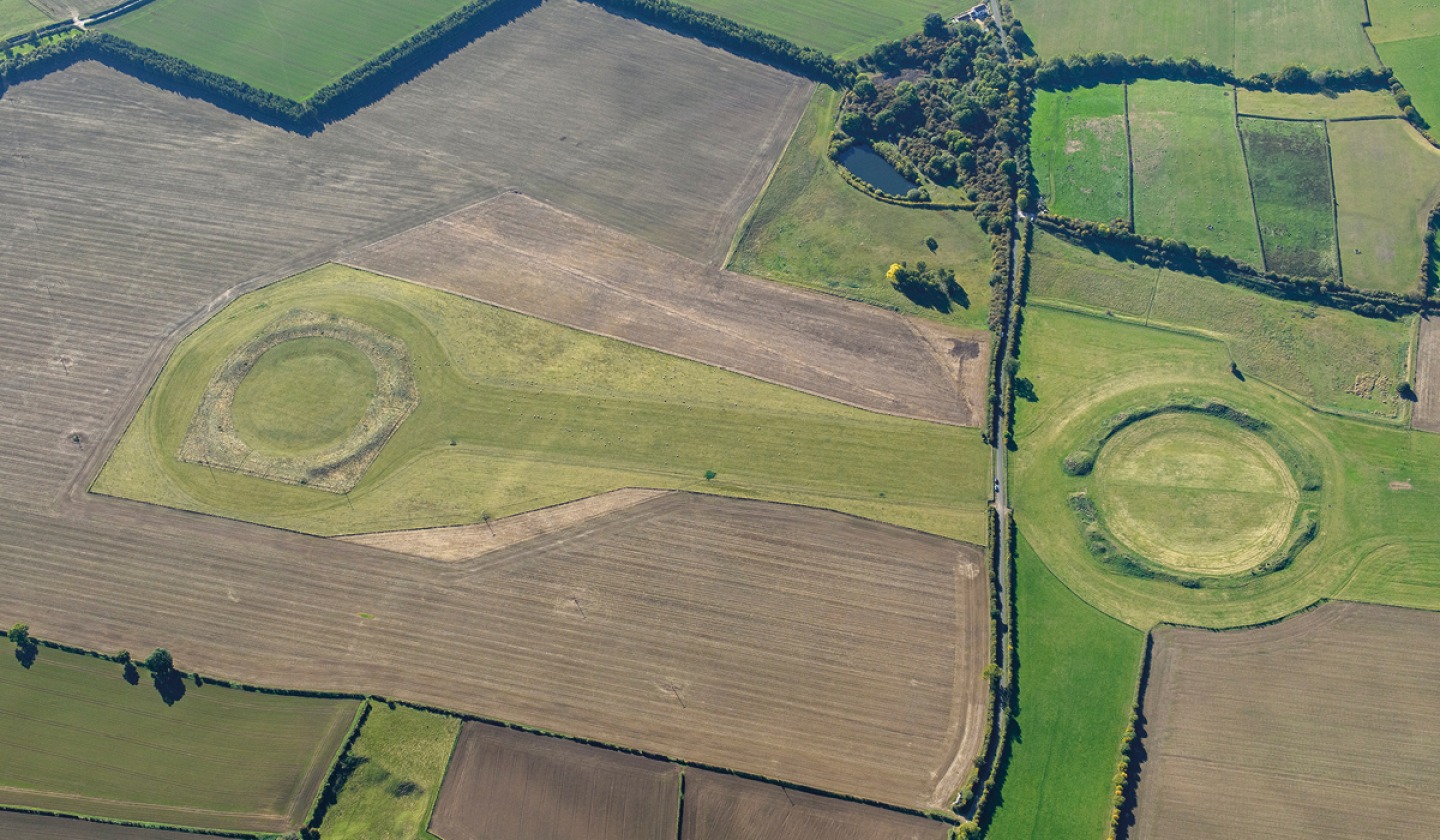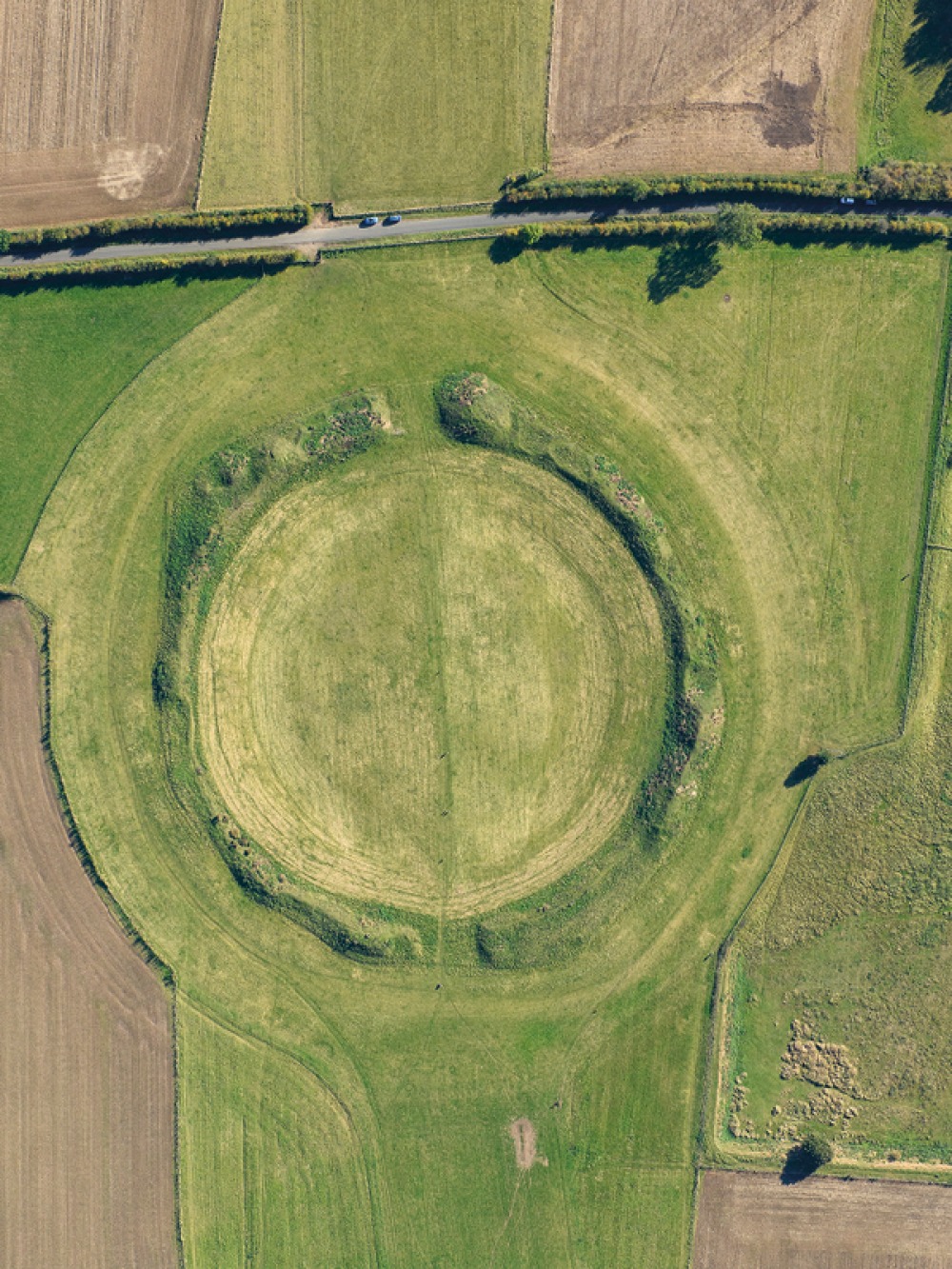Discovering 'the Stone Henge of the North' in Yorkshire

Visiting a certain part of Thornborough Moor, you might think the most you will enjoy are the simple pleasures of the serene local landscape. Look under your feet however, and you'll find you're standing on an unparalleled part of our history
But what’s so special about them anyway? And what, actually, is a ‘henge’?
Historic England Inspector Keith Emerick seems like the right man to ask. ‘A henge is a bagel-shaped earthwork, usually consisting of an outer ditch, a high bank, an inner ditch and entrance ways,’ he explains. ‘They date to the late Neolithic and Early Bronze Age, so are roughly 5,000 years old.’
The opening of the central and southern henges at Thornborough to the public is a significant moment for Keith. He’s been involved with the site for 16 years, working with numerous experts and organisations with the aim of opening up the site, and preserving it for future generations. There has been, he says, ‘lots of discussion, lots of negotiation. I love them and I want people to be able to enjoy them, and think about how different or similar people were then to how they are now.’
According to Keith, the ‘Stonehenge of the North’ tag is more than justified, signifying just how special these monuments are. ‘There are no standing stones at Thornborough, but unlike Stonehenge, Thornborough has three henges in a row, and this is unparalleled anywhere in the British Isles,’ he says. Not only are there three henges in a row, the size of the henges is also impressive – each one is more than 200 metres in diameter (about 10 tennis courts or two football pitches). ‘They are some of the biggest and best henges in the country.’
‘The henges are part of a bigger complex of Neolithic
and Bronze Age sites at Thornborough, but also
part of an even bigger early prehistoric landscape which
stretches from Catterick to Ferrybridge’

Dating from 3500 to 2500 BC, the earthworks are thought to have been part of a ‘ritual landscape’ and are probably the most important single ancient site between Stonehenge and the Orkney Islands in Scotland. ‘The henges are part of a bigger complex of Neolithic and Bronze Age sites at Thornborough, but also part of an even bigger early prehistoric landscape which stretches from Catterick to Ferrybridge,’ says Keith. ‘This extended landscape includes several more henges and the standing stones at Boroughbridge, as well as numerous other prehistoric remains, so the whole area is much more extensive than Stonehenge/Avebury, but has gone largely unrecognised.’
It’s believed that the henges were probably laid out and constructed at the same time. ‘The henges are just one part of a long prehistoric story at Thornborough which started about 6,000 years ago,’ Keith continues. ‘The first early-to-middle-Neolithic site at Thornborough Moor is a burial site referred to as “the founder site”. This is followed by a cursus monument.’ A cursus is a long, cigar-shaped monument made up of two parallel banks and ditches – the one at Thornborough stretched from Thornborough village to the River Ure, over a distance of about 1.5 kilometres. ‘This passed out of use, and is now only visible through aerial photography,’ Keith explains. ‘The cursus was replaced by the henges, and after the henges, numerous barrows (or burial mounds) and other sites were constructed on the moor.’
The cursus and the henges are among the earliest ever examples of people constructing anything of this scale in the landscape, which is amazing in itself, but what’s more amazing is how much we know today about what they might have looked like.
Read More: The Coolest Cultural Hotspots in Yorkshire to Visit on World Heritage Day
‘We have a pretty good idea of what they looked like from surviving examples nationally, and from combining the three henges at Thornborough,’ says Keith. ‘The ditches would have been several metres wide and deep, and the banks would have been about four metres high – and probably covered in gypsum, so they would have glowed white. We know that the henges in the south west had flint on them, so they would have had colour, and examination of the early burials at Thornborough has revealed the use of gypsum.’
The purpose of the henges, however, is more challenging to pin down. ‘The period preceding the Neolithic was the Mesolithic. This was a period when people were more mobile. They could build structures, like the lake edge platform found at Star Carr in the Vale of Pickering, and they returned to particular places year after year and occupied and maintained them – but the Neolithic marks a big change in behaviour and culture.
‘People became more settled, developed farming and animal husbandry, developed crops, used pottery for the first time, had more complex flint technology, and began to clear woodland on a more thorough basis. These changes in community behaviour had to have some form of outlet, and one outlet was the formation of big monuments in the landscape. As I said, this is the first time this happened and it needed organisation and planning and a will to make it happen. We don’t know what they were used for, but our assumption is that they had religious, votive and ceremonial functions.’

‘The ditches would have been several metres wide and deep,
and the banks would have been about four metres high – and
probably covered in gypsum, so they would have glowed white’

Read More: Discover the Women Behind North Shields’ Fishing Heritage
It’s thought likely that the henges were regional hubs as they are often found close to routes which would have been used for travel. ‘The henges at Thornborough are on a tongue of relatively higher land sticking out from the north-south Magnesian Limestone ridge, largely surrounded by lower lying marsh,’ Keith explains. ‘There are east-to-west routes, and a clear north-south route. The archaeological evidence shows that flint from the Wolds and east coast was being traded with high-quality stone from the Lake District, so there is potentially some exchange happening at Thornborough.
‘Perhaps you need to think of it as one of those places referred to by Thomas Hardy, where a fair could be a market one day, a hiring fair another day, a marriage fair, and a big party another day.’
Another way to think about the henges and the shift from the Mesolithic to the Neolithic is to think about how we are now trying to move from carbon to a carbon-neutral world. ‘It won’t happen overnight, but it means we have to do things differently and think differently, and we have to build new things,’ says Keith.
If you want to see the Thornborough Henges for yourself, Keith has some advice. ‘Enjoy the space and the sounds of birds. Go into the central henge and look around you. You get the feeling that you are in a huge bowl, and your focus is on the sky. The world really does feel and look different when you are inside. Lie on the ground and look at the sky!’
Next, walk from the central to the southern henge – it’ll take you less than 10 minutes. ‘But when you walk back to the central henge, notice how the ground is very gently undulating. When you look to the north, and the road, you will notice that cars seem to appear and disappear as the land rises and falls, and it is on these higher bits of ground that the prehistoric occupation took place. Look towards Thornborough village and try to see the ridge it sits on. There are probably prehistoric structures under that village because it is on the higher ground,’ Keith finishes. ‘Just go there, and imagine!’










